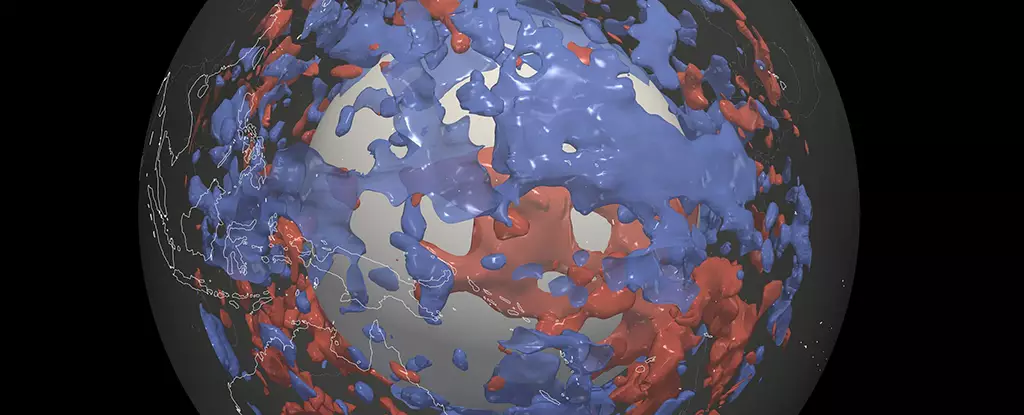For over a century, seismology has served as a vital tool for geoscientists in unraveling the mysteries that lie beneath our planet’s surface. By studying seismic waves generated by earthquakes, scientists can gather crucial information about the composition and structure of the Earth’s interior. Much like the way sound travels through different mediums—altering its speed and characteristics—a variety of seismic waves respond differently to geological materials, allowing researchers to infer the presence of various substances deep within the Earth. Recent advancements in computational power have further enhanced our ability to analyze these waves, leading to groundbreaking discoveries about Earth’s hidden layers.
Novel Findings from Advanced Computational Analysis
A collaborative research effort between ETH Zurich and the California Institute of Technology has recently leveraged the capabilities of the Piz Daint supercomputer to dive deeper into the enigmatic layers of the Earth’s lower mantle. By analyzing all types of seismic waves, this team has produced a remarkable, high-resolution map, revealing unexpected geological features—large, dense rock formations that were believed to be remnants of tectonic plates. These intriguing blobs, cooler and heavier than their surroundings, are positioned in areas far removed from the conventional subduction zones where such materials would typically be expected to sink.
This discovery poses a compelling question: How did these dense fragments come to exist in locations so distant from their presumed origins? As the study reveals, a complex geological history may be at play. Thomas Schouten, an earth scientist involved in the study, emphasizes the widespread nature of these features in the Earth’s mantle, suggesting that many unexplored realms of our planet may harbor similar structures.
The concept of subduction is central to the understanding of plate tectonics; it describes the process by which one tectonic plate is thrust beneath another, often leading to the formation of mountain ranges and deep ocean trenches. The traditional model predicts that materials lost during subduction would not stray too far from their initial locations. However, the new findings challenge this perspective by suggesting that chunks of tectonic plates may traverse extensive distances through the Earth’s mantle before settling in their current positions. This has crucial implications for our understanding of global tectonic dynamics and the mechanisms that govern the movement of materials beneath the surface.
The research underscores an essential aspect of seismic wave propagation—the speed at which waves travel through different materials can vary significantly based on the composition and density of those materials. Schouten notes that while the research’s current focus is on wave speed, the underlying material characteristics must be considered to grasp the full picture. This realization leads to further inquiries: Are the newly discovered formations primarily composed of ancient, silica-rich substances that have persisted since the Earth’s formation, or might they represent zones where iron-rich compositions have accumulated over eons due to mantle convection?
Given the geological complexity of Earth’s interior, pinpointing the exact nature and origin of these dense structures will require extensive future research. The unique characteristics of these features could hold keys to understanding not just the current state of the mantle, but also the geological history that has shaped our planet.
The implications of these findings extend far beyond mere geological curiosity. Understanding the dynamics of these hidden formations and their interplay with surface tectonics could provide invaluable insights into natural phenomena like earthquakes and volcanic activity. The need for detailed composition analyses remains pressing, as deciphering the materials and mechanisms at work beneath our feet can ultimately enhance our preparedness for the geological events that often have far-reaching consequences on human societies.
As scientists continue to utilize advanced computational tools to decode the complexities of Earth’s internal structure, the continued exploration of seismic wave data promises to expand our understanding of a dynamic planet that remains largely uncharted. Each discovery adds to the narrative of Earth’s history and personifies the notion that the geology beneath our feet tells a profound story waiting to be uncovered.


Leave a Reply